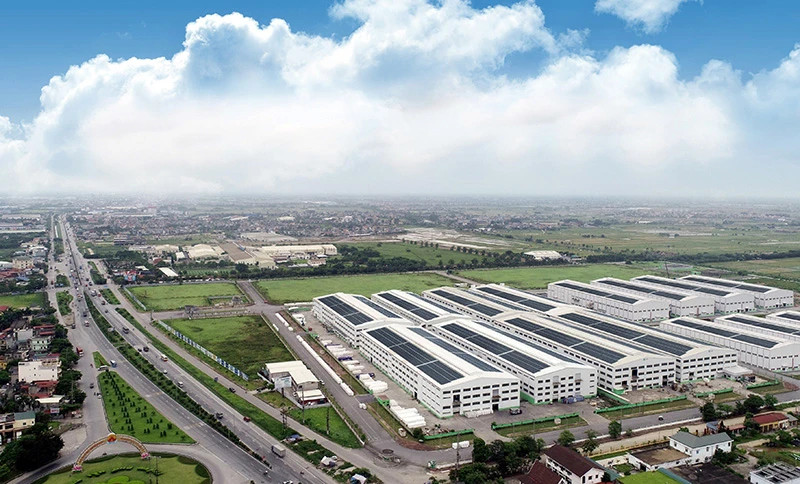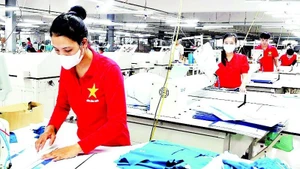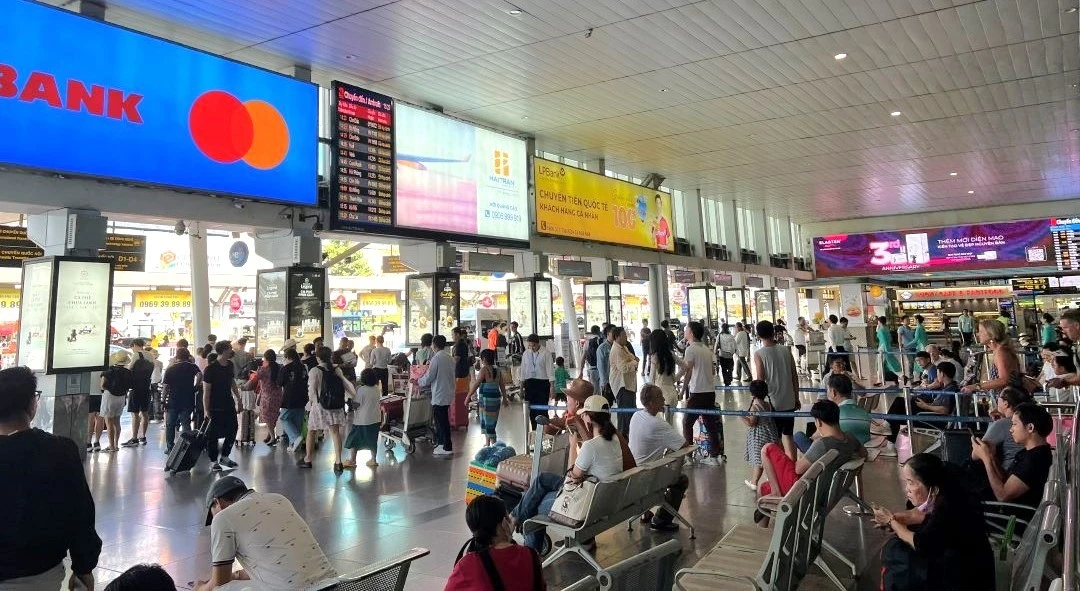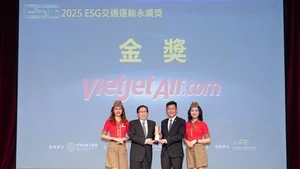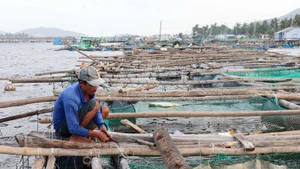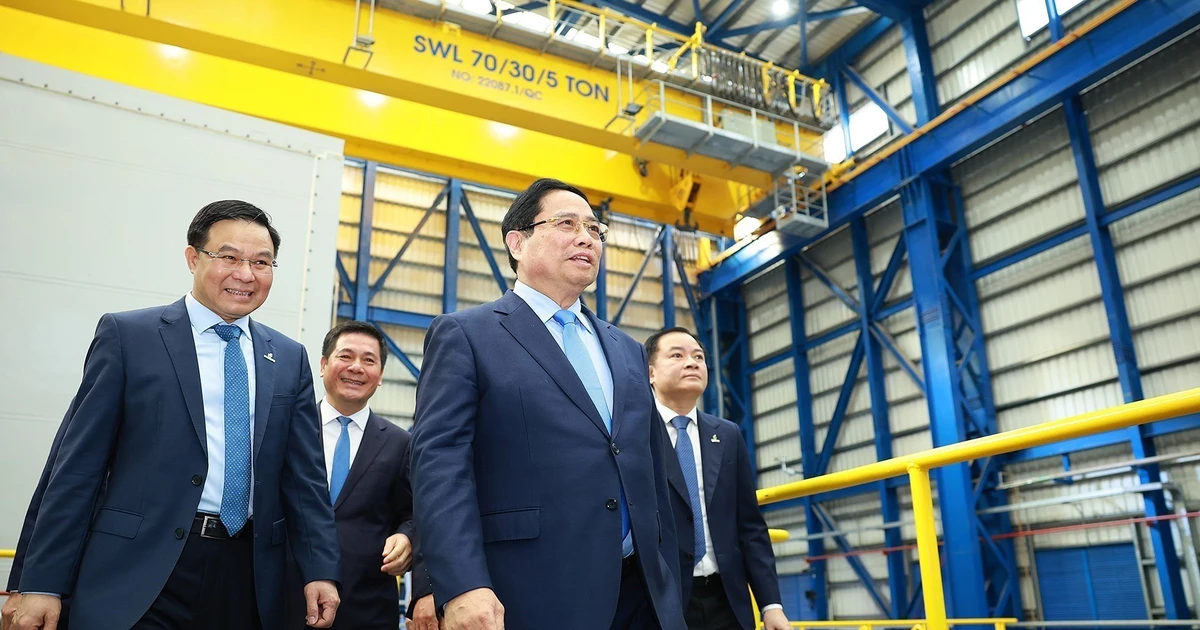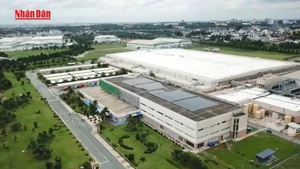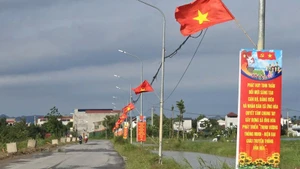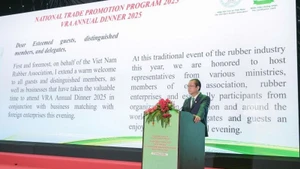According to data from the Ministry of Planning and Investment, by the end of 2023, the country had 416 industrial parks established, including four export processing zones, with a total natural land area of about 129,900 hectares and a total industrial land area of about 89,200 hectares.
Up to now, the system of industrial parks has been present in 61 out of 63 provinces and cities nationwide, becoming a key area attracting domestic and foreign investment projects and a destination for many leading world corporations.
In the new development trend, economic organisation models by territory are changing in development goals, and Vietnam is no exception.
At the same time, towards sustainable development, the requirement to build green industrial parks and convert existing industrial parks into ecological industrial parks is becoming an urgent need to adapt to development requirements.
An assessment report by the Ministry of Planning and Investment shows that in over 30 years of forming and developing industrial zones in Vietnam, up to now, the development of industrial zones in width is facing difficulties due to the limited resources of labour, land, and resources. Labour productivity and resource exploitation efficiency are low, not ensuring harmony between economic development, environmental protection and social security.
This process also faces difficulties as tax and land incentives are gradually decreasing. The linkage and cooperation in industrial production in industrial zones and economic zones are still limited.
According to the plan, by 2030, 40-50 per cent of localities will have plans to convert existing industrial parks into eco-industrial parks, while 8-10 per cent of localities are determined to build new eco-industrial parks to attract investment.
A survey by the Institute for International Investment Studies (ISC) shows that the demand for attracting investment capital to fill the remaining area of Vietnam's planned industrial parks is about 600-650 billion USD. The total investment capital for infrastructure development and filling industrial parks is about 650-700 billion USD.
In addition, the demand for investment capital for technological innovation in enterprises in industrial parks and restructuring and converting 293 existing industrial parks into ecological industrial parks, to realise the green growth target according to the commitment of the Vietnamese Government to the international community, is also very great.
According to the Vietnam Industrial Park Finance Association, the implementation time of an industrial park infrastructure investment project can last more than three years, even five years, because of many difficulties and obstacles in the legal framework and site clearance, especially investment in the model of new industrial parks and ecological industrial parks.
Dr Ngo Cong Thanh, Vice Chairman of the Vietnam Industrial Park Finance Association, said that attracting investment to develop economic zones and industrial parks is showing limitations that must be overcome.
The planning and development orientation of industrial parks and economic zones still lacks a comprehensive vision and long-term perspective. They are still spread out across administrative boundaries, lack industry and regional linkages, and the quality and efficiency of investment attraction have not met the requirements for in-depth development.
In addition, localities and investors developing infrastructure for domestic industrial parks still prioritise attracting investment to fill in, not paying attention to the industry structure, technology, and environmental and social factors of investment projects, so the efficiency of investment in developing industrial parks has not met the requirements.
On the other hand, due to limited financial capacity, investors in industrial park infrastructure still have the mentality of waiting to find secondary investors before investing in shared infrastructure in the industrial park while foreign investors want to have land and technical infrastructure immediately before deciding to invest. This is one of the reasons why many industrial parks have low occupancy rates.
To mobilise large capital sources for investment in industrial parks and economic zones in the coming time, Dr Ngo Cong Thanh said there should be fundamental changes in attracting capital flows, creating conditions for investors to easily access production factors and innovate investment promotion activities.
In addition, legal issues regarding the formation and development of ecological industrial parks, and converting existing industrial parks into ecological industrial parks, need to be legalised or specifically guided, encouraging investors to participate in developing industrial park infrastructure.
Every year, the amount of foreign direct investment (FDI) in industrial parks and economic zones accounts for 60-70% of the FDI capital attracted nationwide, and this rate is still on the rise. This shows that industrial parks play a very important role in foreign investment cooperation activities in Vietnam. The trend of foreign investment in Vietnam in the coming time will focus mainly on industrial parks and economic zones.
Dr Phan Huu Thang, Chairman of the Vietnam Industrial Park Finance Association
